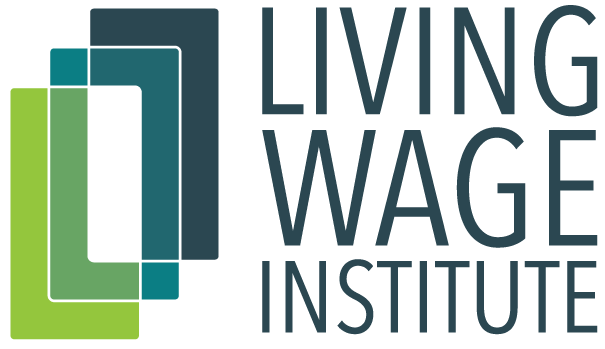



For further information, please visit the FAQs and Methodology pages or submit a question or request through the Contact page.
© 2024 Dr. Amy K. Glasmeier and the Massachusetts Institute of Technology
SIGN INWelcome to the first blog post of Living Wage Local Spotlights: Coronavirus Edition. By Examining towns, cities, and counties across the country, we are chronicling the many ways communities respond to the ongoing Pandemic. The Living Wage Local Spotlights highlight developments in wage policy around the country. COVID-19 presents a new challenge to our regular reporting, and we are blending the living wage experience of communities with local and community responses to the Pandemic's economic impacts. These spotlights showcase the actions communities undertake to make their residents less vulnerable in the face of a global health crisis.
Located just across the river from Boston, Cambridge, Massachusetts, has one of the highest costs of living in the US[1.]. At $17.10, the living wage in Middlesex County far outpaces the current state minimum wage of $12.75.[2] The many businesses drawn in by the presence of schools such as MIT and Harvard are a significant factor driving up the cost of living. Technology firms capitalize on the large pool of highly skilled workers, while restaurants and retail stores cater to Cambridge's large student population.[3]
However, starting in March, Cambridge emptied as schools closed, sending students back home amidst the growing threat of COVID-19.
At 20,000 combined total employees, Harvard and MIT are Cambridge's two largest employers.[4] And with a large portion of the schools' combined 30,000 student population now gone, Cambridge's economic activity is stagnant.[5,6] With thousands of cases still active in Massachusetts, a state of normalcy is unlikely to return in the foreseeable future.[7]
Amid continued isolation, Cambridge set up the COVID-19 Datacenter, an interactive website that visualizes the Pandemic in easy to read tables and maps. Users can access a map of Cambridge and see the number of cases by neighborhood, and the breakdown of evidence over time by race/ethnicity.
Immediately apparent are the population groups most affected by COVID. The data center reports that Black Cantabrigians are almost three times as likely to contract coronavirus as their White counterparts, with case rates of 180 and 53 per 10,000 people. Hispanics also had a higher case rate of 95 per 10,000 people.[8] All told, Cambridge's experience mirrors that of the nation. Coronavirus affects Black and Latino communities much harder than White and Asian ones.[9]
A person's Race isn't the only social factor that has seen disproportionate rates of the disease in certain groups. In New York City, low-income communities suffer from much higher rates of coronavirus than wealthier ones. [10] In contrast, the Cambridge statistics exhibit no apparent trends. The Port and East Cambridge have the highest case rates but are both on par with the city as a whole in terms of median household income. MIT/Area 2 has the highest poverty rate at 22.5% but has an incredibly low rate of two cases per 10,000 people.[11]
Using neighborhoods as a proxy for income level in analysis naturally has its flaws. Of course, there is more to the story than the raw numbers can tell. For one, not every case reported has a confirmed address, so not all instances in Cambridge are assigned to a neighborhood. People who are no longer in Cambridge, i.e., students, will also not be included in the total cases despite being counted in the neighborhood's official population count. MIT/Area 2's minimal case rate is no doubt affected by this fact.[8]
There are several more speculative explanations. Perhaps higher-income people get tested more often, or maybe the neighborhoods aren't large enough to be representative samples. Whatever the reason, collecting the data is just the first step of many that local governments have to take to try to react and soften the toll that this Pandemic will have.
In the coming weeks, we'll look at more ways different localities have been responding to the crisis. From the urban metropolises of the Northeast to the rural towns of the Great Plains, everyone is facing similar problems, but the solutions have varied widely.
Sources
https://livingwage-mit-edu.ezproxy.canberra.edu.au/counties/25017
https://www.bostonmagazine.com/property/2016/02/21/boston-expensive/
https://www.cambridgema.gov/CDD/factsandmaps/economicdata/top25employers
https://registrar-mit-edu.ezproxy.canberra.edu.au/statistics-reports/enrollment-statistics-year
https://oir.harvard.edu/files/huoir/files/harvard_cds_2018-19.pdf
https://www.bls.gov/regions/new-england/news-release/consumerpriceindex_boston.htm
https://boston.maps.arcgis.com/apps/opsdashboard/index.html#/a2f67ae8147948919ea2f99dd09d0955
https://cityofcambridge.shinyapps.io/COVID19/
https://www.cdc.gov/coronavirus/2019-ncov/need-extra-precautions/racial-ethnic-minorities.html
https://time.com/5821212/coronavirus-low-income-communities/
https://www.cambridgema.gov/~/media/Files/CDD/FactsandMaps/profiles/demo_profile_neighborhood_2019.ashx
Biography: Gabriel Barrett is a rising sophomore at MIT studying urban planning and computer science. At school, he’s a part of the Black Student Union Political Action Committee and a member of the student radio station.